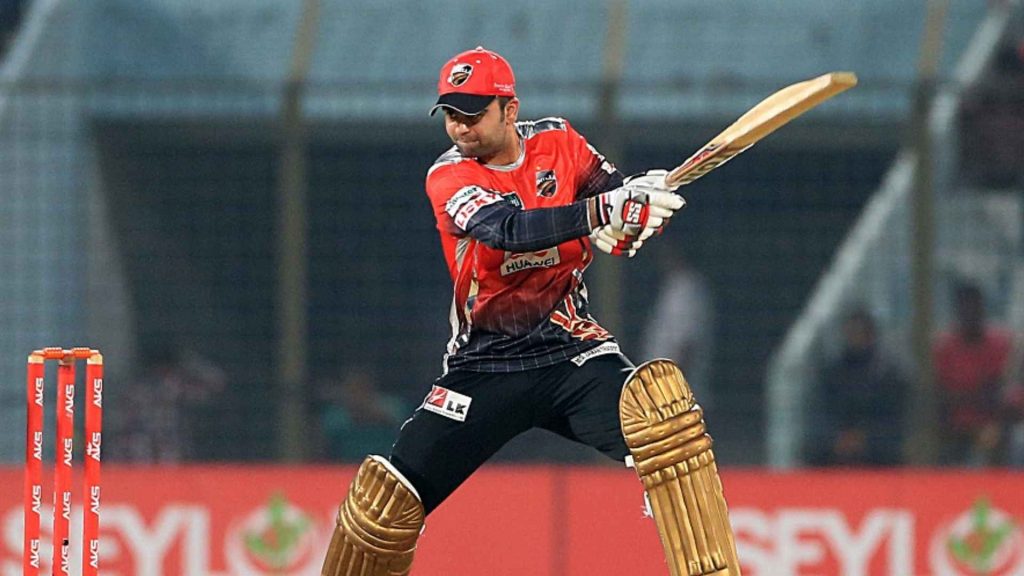The Bangladesh Premier League (BPL) has been a platform for both international stars and local talents to showcase their skills in the T20 format. Among the many ways to evaluate a player’s performance, Batting Averages in BPL provide valuable insight into consistency, ability to score, and contribution to the team’s success. In this article, we’ll explore what these averages really mean, analyze standout performers, and dig into the numbers behind some interesting case studies from the early years of the tournament.
Understanding Batting Averages in T20 Cricket

Before diving into the Batting Averages in BPL, it’s important to understand how the batting average in cricket is calculated. A player’s batting average is determined by dividing the total number of runs scored by the number of times they have been dismissed (i.e., innings played minus not outs). In T20 leagues like the BPL, averages are often overshadowed by strike rates, but they remain crucial for gauging a batsman’s consistency.
A high average typically indicates a batsman who not only scores runs but also does so frequently without losing his wicket, which is essential in a format where quickfire innings are the norm but consistency is rare.
Read More:- Best High RTP Slot Games at E2Bet for Big Wins
Why Batting Averages Matter in the BPL
The Batting Averages in BPL offer a reflection of a player’s value to his franchise over time. While high strike rates may turn heads, a solid batting average shows resilience, the ability to anchor innings, and dependable run-scoring — all of which are vital in chasing or setting targets. This makes average a key metric for team selectors and fans alike when evaluating a player’s impact.
Especially in tight games or tricky batting conditions, players with dependable averages are the ones who more often than not see the team through to competitive totals.
Ahmed Shehzad: An Explosive Performer with Consistency

One of the most remarkable figures when examining Batting Averages in BPL is Pakistan’s Ahmed Shehzad. Playing in the 2012 season, Shehzad participated in 12 matches and batted in all of them. His aggregate of 486 runs included a century and four fifties, with a top score of 113 not out.
His average of 48.60 is not just impressive — it’s elite, especially in the context of a T20 competition. When paired with his strike rate of 155.76, it shows a rare combination of aggression and consistency, making him one of the standout players of that edition.
The Curious Case of Alauddin Babu
While reviewing the Batting Averages in BPL, one cannot ignore anomalies — and Alauddin Babu is one such example. Across two seasons (2012-2013), Babu played seven matches but only batted four times. Scoring just 8 runs in total, his average sits at a dismal 2.66.
This low average highlights the challenges faced by lower-order batsmen, especially those who might bat less frequently or under pressure situations. It also shows that not every player in the BPL was there for their batting prowess — many, like Babu, were picked for their bowling or all-round abilities.
Kabir Ali: Steady Returns in the Middle Order

Kabir Ali, an English cricketer, brings a different perspective to the Batting Averages in BPL. In his 14-match tenure, he batted in 11 innings and remained not out 5 times — a significant stat that boosted his average to 24.16. Scoring 145 runs with a half-century and a strike rate of 145.00, Kabir provided stability in the lower-middle order.
This is a classic example of how not-outs can inflate averages, especially for players batting lower in the order. Nonetheless, it’s evident that Kabir made his opportunities count when he got the chance to bat.
Alok Kapali: Underwhelming Numbers from a Veteran
Alok Kapali, known in Bangladesh for his all-round abilities, had a forgettable stint in terms of Batting Averages in BPL. Across 10 innings, he scored 136 runs with a top score of 34* and remained not out three times. This gave him a modest average of 19.42 and a strike rate of just 103.81 — relatively low by T20 standards.
Kapali’s stats suggest that while he may have been valuable in other departments, his contribution with the bat was below par in the BPL context. It’s a reminder that even experienced players can struggle in the shortest format of the game.
Al-Amin Hossain: A Bowler with a Rare Batting Entry

Among the most interesting entries in the list of Batting Averages in BPL is Al-Amin Hossain. Known exclusively for his bowling, Al-Amin played eight matches but batted only once — and remained not out on 2. This leaves him without a batting average (since he was never dismissed), but a quirky 100.00 strike rate from that lone appearance.
It’s a statistical outlier, but one that highlights how not-outs and limited opportunities can skew or nullify averages in T20 cricket.
Comparative Table of Players’ Batting Averages
Let’s take a look at the compiled statistics of these players to get a clearer view of how they compare when evaluating Batting Averages in BPL:
| Player | Span | Mat | Inns | NO | Runs | HS | Ave | SR |
|---|---|---|---|---|---|---|---|---|
| Ahmed Shehzad | 2012 | 12 | 12 | 2 | 486 | 113* | 48.60 | 155.76 |
| Alauddin Babu | 2012-2013 | 7 | 4 | 1 | 8 | 5 | 2.66 | 50.00 |
| Kabir Ali | 2012-2013 | 14 | 11 | 5 | 145 | 50 | 24.16 | 145.00 |
| Alok Kapali | 2013 | 12 | 10 | 3 | 136 | 34* | 19.42 | 103.81 |
| Al-Amin Hossain | 2012-2013 | 8 | 1 | 1 | 2 | 2* | – | 100.00 |
Batting Averages vs. Strike Rate: Which Matters More in BPL?
The ongoing debate in cricket analysis revolves around the importance of batting average versus strike rate. In the Batting Averages in BPL, we see examples of players like Ahmed Shehzad who excelled at both, while others like Kabir Ali or Kapali had decent averages but less impressive strike rates.
In the BPL, where run chases and death-overs flourish, strike rate can sometimes overshadow averages. However, in pressure situations or when chasing a modest target, a reliable average is what stabilizes an innings. Ideally, a balanced combination of both metrics is what defines a truly impactful batsman.
Top Order vs. Lower Order: The Role of Batting Position
Another factor affecting Batting Averages in BPL is the batting position. Openers and top-order batsmen like Shehzad get more opportunities to build innings, hence their averages tend to reflect their consistency over time. Lower-order batsmen like Kabir Ali often bat during final overs, facing fewer deliveries and often in high-risk scenarios, which affects both average and strike rate.
Understanding a player’s role and position adds nuance to interpreting their batting statistics.
Limited Matches, Skewed Averages: The Sample Size Problem
One of the biggest challenges in analyzing Batting Averages in BPL is the limited number of matches some players have played. Averages become more meaningful with a larger sample size. Alauddin Babu’s and Al-Amin Hossain’s cases illustrate how low match counts or rare innings can distort batting statistics.
Thus, when using averages for evaluation, context and match frequency are critical.
Impact Players with High Averages
Players who consistently maintain high averages in T20 leagues like the BPL often end up being game-changers. Ahmed Shehzad is a textbook example. His high average and strike rate meant he could either play the aggressor’s role or anchor an innings, depending on the match scenario.
In future editions of the BPL, identifying players with such profiles early can be key to building a successful franchise team.
How Teams Can Use Batting Averages for Selection
Franchises often rely on Batting Averages in BPL to make informed decisions during auctions and drafts. A high average suggests a player who can be trusted to deliver consistent performances. Combined with strike rate and other metrics, averages help form a data-backed strategy for squad building.
For local players, especially uncapped ones, a decent BPL average can become a stepping stone to national team selection.
Final Thoughts on Batting Averages in BPL
While averages are just one piece of the performance puzzle, the analysis of Batting Averages in BPL provides a fascinating look into the consistency and reliability of players across different seasons. From elite performers like Ahmed Shehzad to seldom-seen batsmen like Al-Amin Hossain, every average tells a story.
Going forward, as the BPL continues to evolve, these stats will only become more relevant, helping teams and fans appreciate the finer nuances of T20 cricket.
Read More:- 5 Most Rewarding E2Bet Games with Low Risk & High Prizes: Powerful Picks
Averages as a Mirror of Reliability
To wrap up, Batting Averages in BPL remain a vital metric for assessing a player’s value and contribution to their team. Whether it’s a spectacular season like that of Ahmed Shehzad or an underwhelming one like Alauddin Babu’s, each number gives insight into performance, potential, and pitfalls. As more seasons of the BPL unfold, these averages will continue to shape the legacy of cricketers who make their mark in Bangladesh’s premier T20 league.
